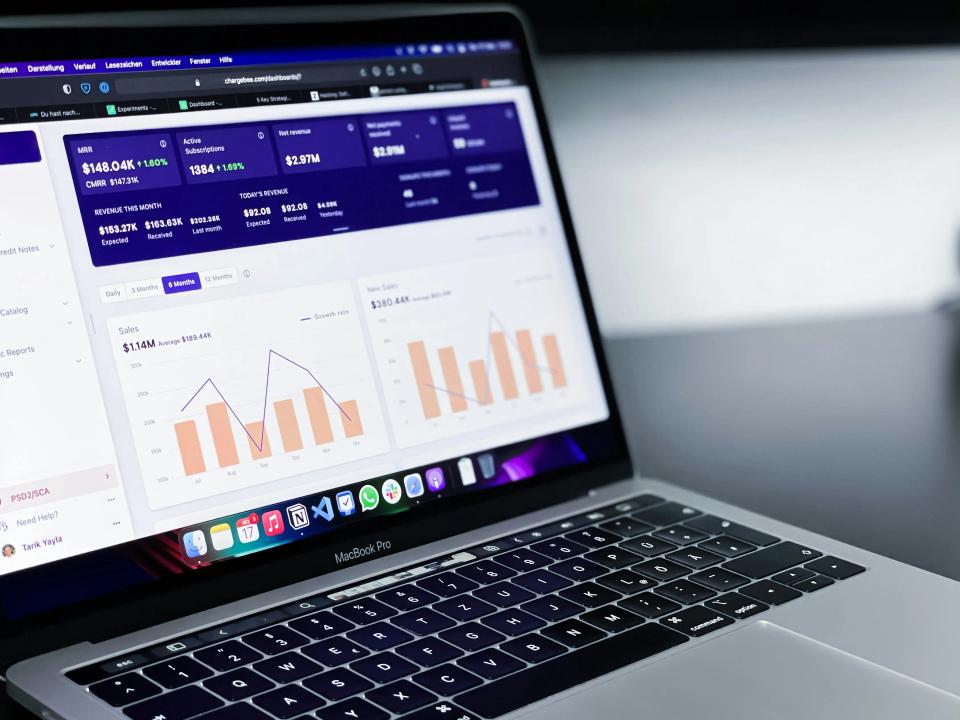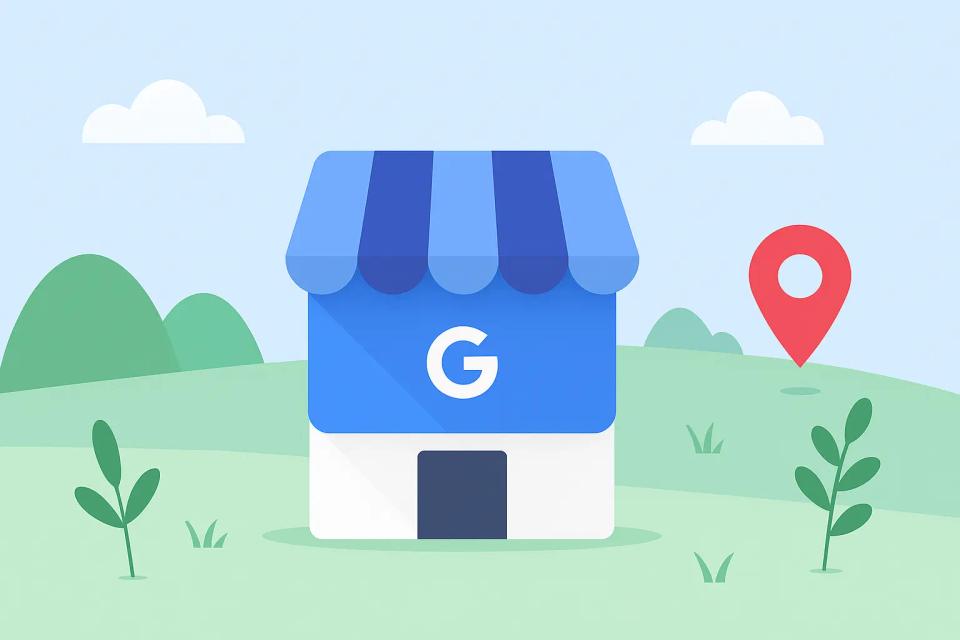Is your business juggling multiple storefronts? Managing one online presence is a beast. Scaling that to five, ten, or even hundreds of locations? It can feel like an impossible puzzle, a constant battle for visibility where each new pin on the map adds another layer of complexity. You're stretched thin, wondering if your message is even reaching the right people in the right places.
The truth is, generic SEO just won't cut it when you're fighting on multiple local fronts. You face a unique dilemma: how do you maintain brand consistency while ensuring each location resonates with its local community? How do you allocate precious resources effectively and track what's actually working for each specific outlet? It's enough to make any business owner lose sleep.
But what if you could turn this challenge into your greatest advantage? Imagine tapping into a constant stream of highly motivated local customers, people actively searching for your services, right in their neighborhood. Picture increased foot traffic, phones ringing off the hook, and a flood of quality leads for every single one of your locations. This isn't a pipe dream; it's the power of effective local SEO. This guide will break down actionable local SEO strategies for multi-location businesses, covering everything from foundational setup to advanced GMB optimization and reputation management, helping you turn regional searches into tangible results. At CaptivateClick, we've helped numerous businesses navigate these complexities, and now we're sharing the roadmap with you.
Why Local SEO is Non-Negotiable for Multi-Location Success
Ever typed "pizza near me" into your phone? You're not alone. The power of "near me" searches is undeniable, with these types of queries exploding by over 500% in recent years. This isn't just casual browsing; a staggering 78% of location-based mobile searches result in an offline purchase. If your individual business locations aren't showing up, you're practically invisible to a massive pool of ready-to-buy customers.
Effective local SEO catapults each of your locations into the spotlight, right where local customers are looking: the Local SERPs and the coveted Google Map Pack. Did you know that appearing in Google’s Local 3-Pack can snag 44% of clicks on search results pages? This isn't just about visibility; it's about attracting highly targeted traffic. These are customers actively seeking your specific products or services within a defined geographic area, leading to higher quality leads and, ultimately, more sales for each branch.
This targeted approach gives you a significant competitive advantage. While your competitors might be casting a wide, generic net, you'll be outranking them in the local searches that matter most. More than just outranking, you'll be building local trust and authority. By consistently appearing and providing value to each community you serve, your business becomes the go-to choice, the trusted name people turn to, location by location. For a deeper dive into core local strategies that form the basis of multi-location success, explore these foundational local SEO strategies for maximum visibility.
Foundational Pillars for Multi-Location Local SEO
Before you can dominate local search, you need a rock-solid foundation. Think of it as building a skyscraper; without the right groundwork, everything else will eventually crumble. For multi-location businesses, this foundation rests on consistency, dedicated local presence, and smart website architecture.
Consistent NAPU (Name, Address, Phone Number, URL) for Each Location
This is the absolute cornerstone, the golden rule of local SEO: your business's Name, Address, Phone number, and Website URL (NAPU) must be meticulously accurate and perfectly consistent for each location, everywhere it appears online. Why the obsession? Search engines like Google rely on this data to verify your business's legitimacy and physical presence. Inconsistencies create confusion, erode trust, and can torpedo your rankings. According to insights on NAP audits, even minor discrepancies can cause major headaches.
Managing NAPU data for dozens, or even hundreds, of locations can feel like herding cats. Start with a master spreadsheet to track the correct information for every single outlet. For ongoing management and distribution to online directories, consider leveraging local SEO citation tools or platforms designed for multi-location businesses. This ensures that whether a customer finds you on Google, Yelp, or a niche industry directory, they're getting the right information, every time.
The effort pays off. Consistent NAPU signals to search engines that your business is established and reliable, directly impacting how you appear in local search results. This meticulous attention to detail is a non-negotiable first step in any effective local SEO strategies for multi-location businesses.
Dedicated, Optimized Landing Pages for Each Location
Stop treating your locations like afterthoughts on a single "contact us" page! Each of your physical locations is unique, serving a distinct community, and it absolutely needs its own dedicated, optimized landing page on your website. Think of these pages as digital storefronts, each tailored to its local audience. As highlighted in strategies for tailoring your online presence with local landing pages, this is crucial for local relevance.
What makes a killer location page? It's more than just listing an address. Each page must feature unique, locally-relevant content – no lazy duplication! Prominently display the full NAPU for that specific location. Embed a Google Map to make finding it a breeze. Implement local business schema markup (like LocalBusiness) to give search engines rich, structured information; boosting local SEO with location page schema can significantly enhance visibility.
Don't forget to sprinkle in location-specific testimonials and reviews to build trust. Weave local keywords naturally into title tags, meta descriptions, H1s, and body content (e.g., "Best Italian Restaurant in Downtown Springfield" vs. just "Italian Restaurant"). Finally, include clear Calls-to-Action (CTAs) relevant to that location, like "Call Springfield Branch" or "Get Directions to Elm Street Store." This focused approach is key to consistent branding and ranking across multiple locations.
Website Structure for Multi-Location Businesses
Your website's overall structure needs to support your multi-location strategy seamlessly. Imagine a customer landing on your homepage; how easily can they find the information for the specific branch closest to them? This is where a user-friendly store locator functionality becomes indispensable. This feature should allow users to search by zip code, city, or even allow geolocation to find the nearest outlet, as detailed in best practices for local SEO website store locator structures.
Beyond the locator, ensure your website has clear navigation that guides users effortlessly to individual location pages. This might involve a main menu item like "Locations" that drops down to list regions or allows for a search. The goal is to make the user journey as intuitive and frictionless as possible.
A well-thought-out website structure not only benefits users but also helps search engines understand the relationship between your main brand and its individual local entities. Proper internal linking between your main site and location pages, and even between relevant location pages (e.g., linking to nearby locations), distributes link equity and reinforces geographic relevance. This careful planning is essential for any comprehensive multi-location SEO guide.
Mastering Google My Business (GMB) for Multiple Locations
If local SEO is the battlefield, then Google My Business (now Google Business Profile, or GBP) is your most powerful weapon. For multi-location businesses, mastering GMB isn't just important; it's the absolute key to unlocking local visibility and customer engagement. This is where your GMB optimization efforts will truly shine, directly impacting how often and how prominently each of your locations appears to nearby searchers.
Claiming & Verifying All Listings
Your first mission: ensure you have claimed and verified the GMB listing for every single one of your locations. Ownership is non-negotiable. Unclaimed listings are like unlocked doors, inviting inaccuracies or even malicious edits. For businesses with ten or more locations, Google offers GMB bulk verification options, which can be a massive time-saver compared to verifying each profile individually.
The verification process confirms to Google that your business is legitimate and that you have the authority to manage its online presence. This step is crucial for building trust with both Google and potential customers. Don't let any of your locations fall through the cracks; a comprehensive audit to identify and claim all existing or missing profiles is paramount.
Once claimed, these profiles become your digital billboards in local search results and on Google Maps. Neglecting this step is like telling local customers you don't care if they find you.
Centralized Management with GMB Location Groups
Managing dozens or hundreds of individual GMB listings can quickly become a logistical nightmare. Enter GMB Location Groups. This feature is a lifesaver for multi-location businesses, allowing you to efficiently manage multiple listings from one dashboard. Imagine updating holiday hours or launching a new promotion – with location groups, you can apply these changes across multiple selected profiles simultaneously, ensuring consistency and saving incredible amounts of time.
Location groups also allow for better organization and user management. You can assign different access levels to team members, perhaps giving regional managers control over their specific cluster of locations while maintaining overall administrative control at the corporate level. This empowers local teams to respond to reviews or update local details promptly, while still adhering to brand guidelines.
This centralized approach transforms a potentially chaotic task into a streamlined process, making it feasible to maintain high-quality, accurate GMB profiles for every single outlet.
Optimizing Each Individual GMB Listing
Centralized management is great, but local success hinges on the details of each individual GMB listing. Each profile needs to be a rich, compelling snapshot of that specific location. This means going far beyond just the basic NAPU. Ensure you've selected the most accurate primary and secondary categories for each location. Fully flesh out your services and products, including detailed descriptions and even prices where appropriate. Don't forget to utilize attributes to highlight features like "wheelchair accessible," "free Wi-Fi," or "outdoor seating"—these details can be powerful decision-makers for customers. According to GMB optimization experts, completing all GMB sections is crucial.
Visuals are king! Upload high-quality, location-specific photos and videos. Showcase each unique storefront, your friendly local team, your products in action, and even the local environment. Regularly use Google Posts to share local announcements, offers, and events specific to each location. This keeps your profile fresh and engaging. Actively manage the Q&A section by proactively adding frequently asked questions and promptly answering user-submitted queries for each location; this not only helps customers but also provides valuable keyword opportunities.
Encouraging and Responding to Reviews (Per Location)
While we'll dive deeper into reputation management later, it's crucial to touch on reviews within the GMB context. Google reviews are a massive ranking factor and a huge influence on customer decisions. Each GMB profile will accumulate its own set of reviews, and you need a strategy for encouraging new reviews and responding to all of them – positive and negative – for each specific location.
Timely, personalized responses show you care and are actively engaged with your local customer base. This interaction can turn a negative experience around and amplify positive ones. Remember, potential customers are reading these exchanges!
Utilizing GMB Insights
Knowledge is power, and GMB Insights provides a wealth of data on how customers are interacting with each of your local listings. Track key metrics for each location: how customers searched for your business (direct vs. discovery), where customers view your business on Google (Search vs. Maps), customer actions (website visits, direction requests, calls), and photo views. This data is invaluable for understanding what's working and where you can improve your GMB optimization efforts.
For instance, if GMB Insights shows a high number of direction requests for one location but low call volume, you might investigate if the phone number is displayed correctly or if call-tracking needs adjustment. Regularly analyzing these insights on a per-location basis allows you to refine your local SEO tactics and maximize the performance of each GMB profile. For a deeper understanding of GMB, mastering your Google My Business profile is essential.
Localized Keyword Research: Speaking Each Community's Language
Think "plumber" is a good enough keyword for all your locations? Think again! In the world of multi-location SEO, generic keywords are a recipe for getting lost in the crowd. To truly connect with local customers, you need to speak their language, using the specific terms and phrases they're typing into search engines when they need your services in their neighborhood. This means "emergency plumber Anytown" will crush "plumber" for a user in Anytown needing urgent help, while "kitchen faucet repair Springfield Suburb" targets a different, equally specific need.
How do you unearth these local goldmines? Start with Google Keyword Planner, but don't just look at broad terms; use its powerful location filtering capabilities to drill down to specific cities, states, or even zip codes relevant to each of your outlets. Google Trends is another fantastic tool for comparing search interest in different keywords across various regions and identifying seasonal peaks. Don't forget to spy on your local competitors – what terms are they ranking for in specific localities? Analyzing their strategy can reveal valuable keyword opportunities you might have missed.
Beyond standard tools, think about how people actually search. Incorporate "near me" and other geo-modified search queries (e.g., "[service] in [neighborhood]," "[product] [city name]"). If it's relevant to your business type, consider incorporating local lingo, slang, or well-known landmarks into your keyword strategy. For example, a tour company in New York might target "things to do near Times Square" or "Big Apple tours." Once you've identified these potent local keywords, strategically apply them to the corresponding location pages on your website, their GMB profiles, and any local content you create. This targeted approach ensures your message resonates deeply within each community you serve.
Building Local Citations & Links for Each Location
What exactly are local citations? Think of them as online mentions of your business's core information: Name, Address, and Phone number (NAP). These can appear on a wide array of websites, from major directories like Yelp and Yellow Pages to niche industry-specific sites and local chamber of commerce pages. According to Uberall, these local SEO citations are fundamental signals that Google uses to verify your business's existence, legitimacy, and geographic relevance. For multi-location businesses, building a strong, consistent citation profile for each individual location is crucial.
It's not just about quantity; the quality and consistency of your citations matter immensely. Focus on getting listed in reputable, authoritative directories relevant to your industry and each specific locality. Inconsistent NAP information across these platforms can confuse search engines and harm your local rankings – a problem that local SEO citation management tools can help solve. These tools can help audit existing citations, identify errors, and distribute correct information across a wide network of directories, ensuring each of your locations has an accurate and robust online footprint. In fact, citation signals contribute significantly to your Map Pack ranking potential, with some studies suggesting they account for around 13.31% of ranking factors.
Beyond citations, actively pursue local link building opportunities for each branch. This means earning backlinks from other reputable local websites. Consider sponsoring local events, youth sports teams, or community festivals. Partner with complementary, non-competing local businesses for cross-promotion. Join local Chambers of Commerce or business associations, many of which offer member directories with valuable links. Another powerful tactic is to create valuable local resources that naturally attract links, such as a guide to local attractions if you're a hotel, or a neighborhood relocation guide if you're a real estate agency. Each quality local link acts as a vote of confidence for that specific location, boosting its authority and search visibility.
Multi-Location Reputation Management: Building Trust Region by Region
In the digital age, your online reputation is your currency. For multi-location businesses, managing this reputation across numerous outlets can seem daunting, but its impact on local SEO and conversions is too massive to ignore. Customer reviews are not just feedback; they are powerful social proof that directly influences whether a potential customer chooses you or a competitor. In fact, the quality and quantity of reviews are significant ranking factors, with GMB reviews alone influencing around 16.53% of how you rank in the Google Map Pack.
The first step is comprehensive monitoring. You need a system to track reviews across all relevant platforms—Google Reviews, Yelp, Facebook, TripAdvisor, and any industry-specific review sites—for all your locations. Manually checking each platform for each location is impractical at scale. Thankfully, there are many multi-location review monitoring tools available that can aggregate reviews into a single dashboard, alerting you to new feedback in real-time. This allows you to stay on top of your reputation without drowning in a sea of browser tabs.
Once you're monitoring, you need a strategy for responding—to every review, both positive and negative. Timeliness, professionalism, and personalization are key. Generic, copy-pasted responses won't cut it. Address the reviewer by name, acknowledge their specific comments, and, for negative reviews, offer a genuine apology and a path to resolution. This shows you value customer feedback and are committed to providing excellent service at each specific location. Proactively encouraging reviews is also vital. Implement ethical strategies like adding review links to email signatures, using in-store signage with QR codes, or sending polite post-service follow-up emails. Many businesses find success when they learn how to effectively increase Google reviews through simple, customer-friendly prompts. Finally, leverage those glowing positive reviews! Showcase them prominently on your individual location pages and share them on social media to amplify their impact and build trust region by region. For more on this, explore leveraging customer reviews for local SEO success.
Creating Localized Content & Engaging on Social Media
Your local SEO efforts shouldn't stop at optimizing listings and building citations. To truly connect with each community and establish your locations as local authorities, you need to create localized content and engage authentically on social media. This means going beyond just talking about your products and services. Think about what matters to the people in each specific area your business serves.
Develop blog posts or website sections that highlight local events your branches are participating in, community involvement initiatives, or customer success stories specific to a particular region. Is there local news relevant to your industry or the community around one of your stores? Share it and offer your unique perspective. This type of local SEO content marketing creates locally relevant content that ranks and demonstrates that each of your locations is an integrated part of its neighborhood, not just a faceless chain.
Social media offers a powerful platform for this geo-targeted engagement. Tailor your posts and advertising campaigns to specific geographic areas. Highlight location-specific promotions, news, or events happening at individual branches. Don't just broadcast; engage! Respond to comments, participate in local community groups (where appropriate), and consider collaborating with local influencers or complementary businesses to reach a wider, yet still targeted, local audience. This consistent, localized engagement builds brand affinity and keeps your individual locations top-of-mind.
Tracking, Analyzing, and Refining Your Multi-Location SEO Strategy
You've laid the groundwork, optimized your profiles, and started engaging locally. But how do you know if your local SEO strategies for multi-location businesses are actually working? The answer lies in diligent tracking, insightful analysis, and continuous refinement. Local SEO is not a "set it and forget it" game; it's an ongoing process of improvement.
Start by identifying the Key Performance Indicators (KPIs) that matter most for each location. GMB Insights is a goldmine here, offering data on views, clicks, direction requests, and calls per listing. Dive into Google Analytics, ensuring you have proper segmentation set up to track organic traffic specifically to your individual location pages. Monitor your local keyword rankings for each area – are you climbing the SERPs for those crucial geo-targeted terms? And, most importantly, track conversion rates: are those views and clicks turning into actual calls, form fills, or (if trackable) store visits? According to Local Falcon, tracking metrics like Share of Local Voice (SoLV) can provide deep insights into your local market penetration.
Utilize a suite of tools to gather this data. Google Analytics and Google Search Console are essential starting points. Combine these with GMB Insights and specialized rank tracking software designed for local SEO. The real magic happens when you regularly review this performance data, compare it across locations, identify trends, and then use those insights to adjust your local SEO tactics. Perhaps one location is excelling in GMB views but lagging in website clicks – this might indicate a need to improve the GMB landing page link or the call-to-action on the GMB profile itself. This iterative process of tracking, analyzing, and refining is what separates thriving multi-location businesses from those that get left behind. For businesses just starting or with fewer locations, understanding the fundamentals of local SEO for small businesses can provide a strong base before scaling up.
Conclusion: Unlocking Growth, One Location at a Time
Navigating the complexities of local SEO for a multi-location business can feel like conducting a massive orchestra, with each instrument needing to play its part perfectly, yet in harmony with the whole. It demands a tailored, location-specific approach, moving far beyond one-size-fits-all solutions. But the rewards? They are monumental. Imagine each of your locations shining brightly in local search results, attracting a steady stream of targeted, high-intent customers, and solidifying its presence as a trusted leader in its community.
The journey involves meticulous attention to detail—from ensuring NAPU consistency and crafting unique location landing pages to mastering individual GMB profiles and engaging authentically with each local audience. It requires a commitment to ongoing tracking and refinement. While it might seem complex, a systematic approach to local SEO strategies for multi-location businesses is not only achievable but incredibly rewarding, unlocking sustainable growth, one location at a time. This is how you transform regional searches into tangible, bottom-line results. For those ready to take their strategy to the next level, exploring advanced local SEO strategies for multi-location brands is a logical next step, or perhaps boosting local SEO for nearby businesses to refine individual location performance. If you're looking to truly dominate, leveraging hyperlocal SEO can drive targeted leads even in the most competitive markets.
Feeling overwhelmed by the sheer scale of multi-location SEO? You're not alone. At CaptivateClick, we specialize in crafting and implementing effective local SEO strategies that drive real, measurable results for businesses just like yours. Our global team understands both the big-picture strategy and the critical local nuances required for success across all your markets. Ready to captivate your local audiences and see each of your locations thrive? Contact CaptivateClick today for a consultation, and let's build a winning multi-location SEO guide tailored specifically to your brand's unique needs and ambitions.













